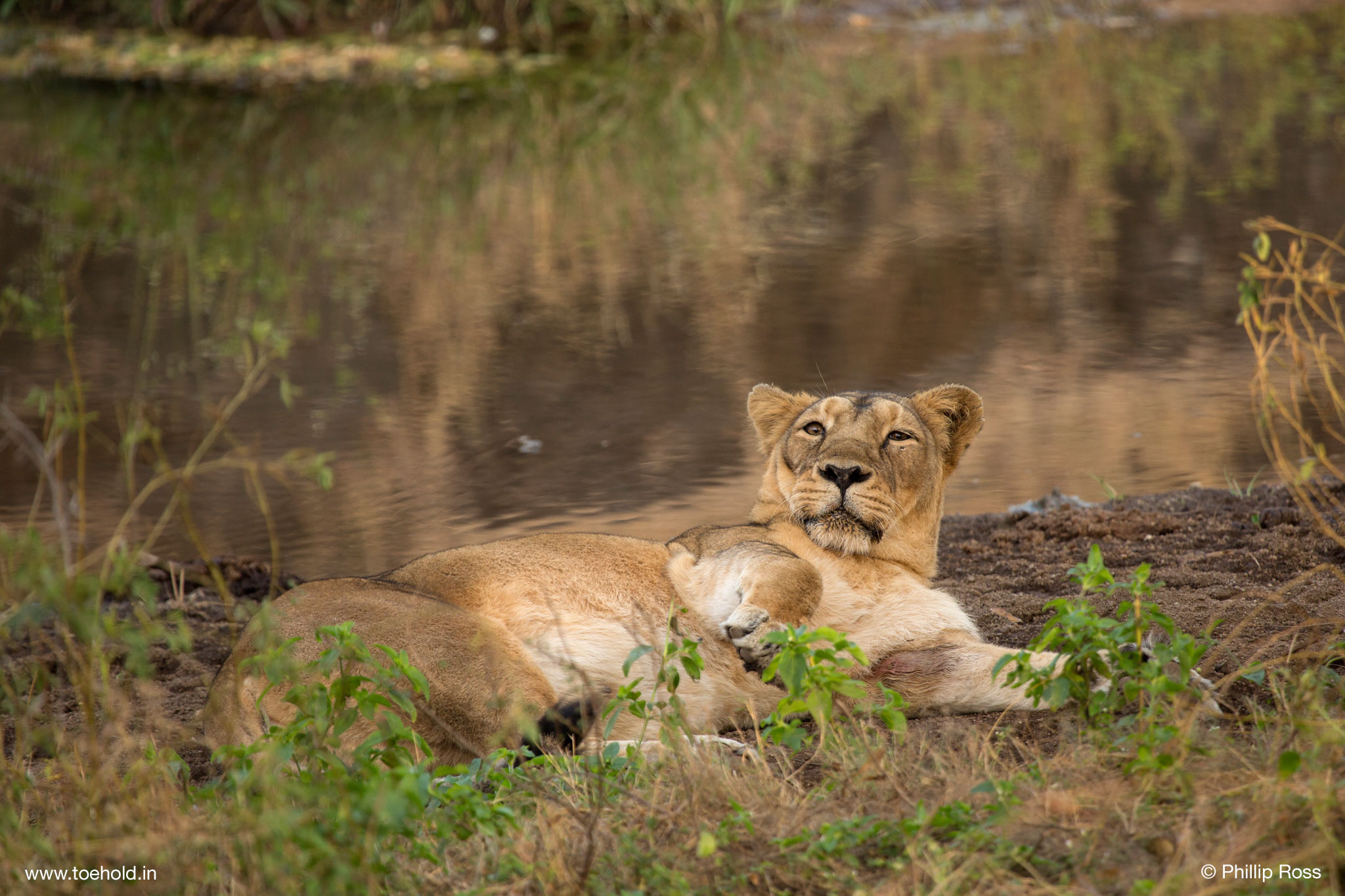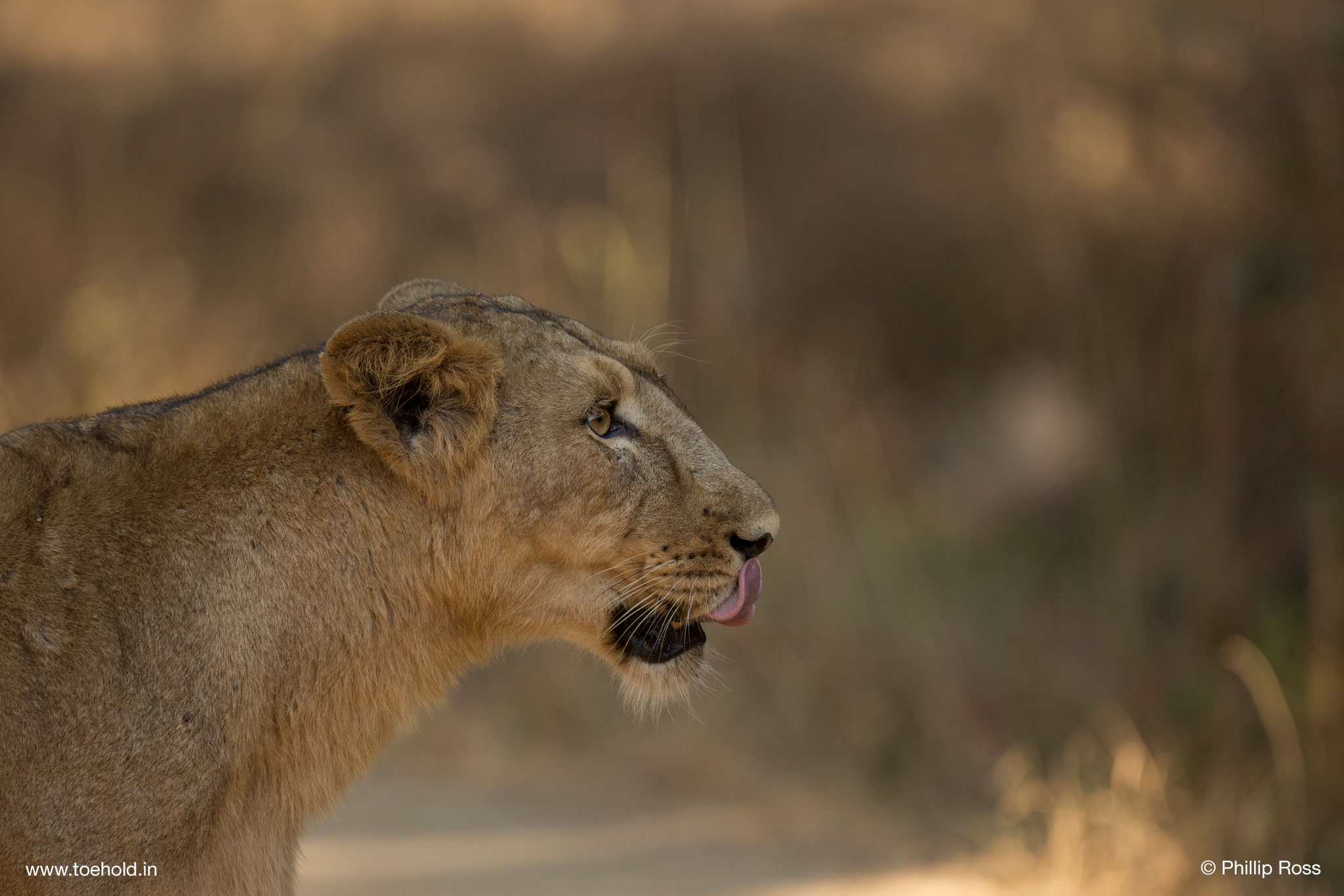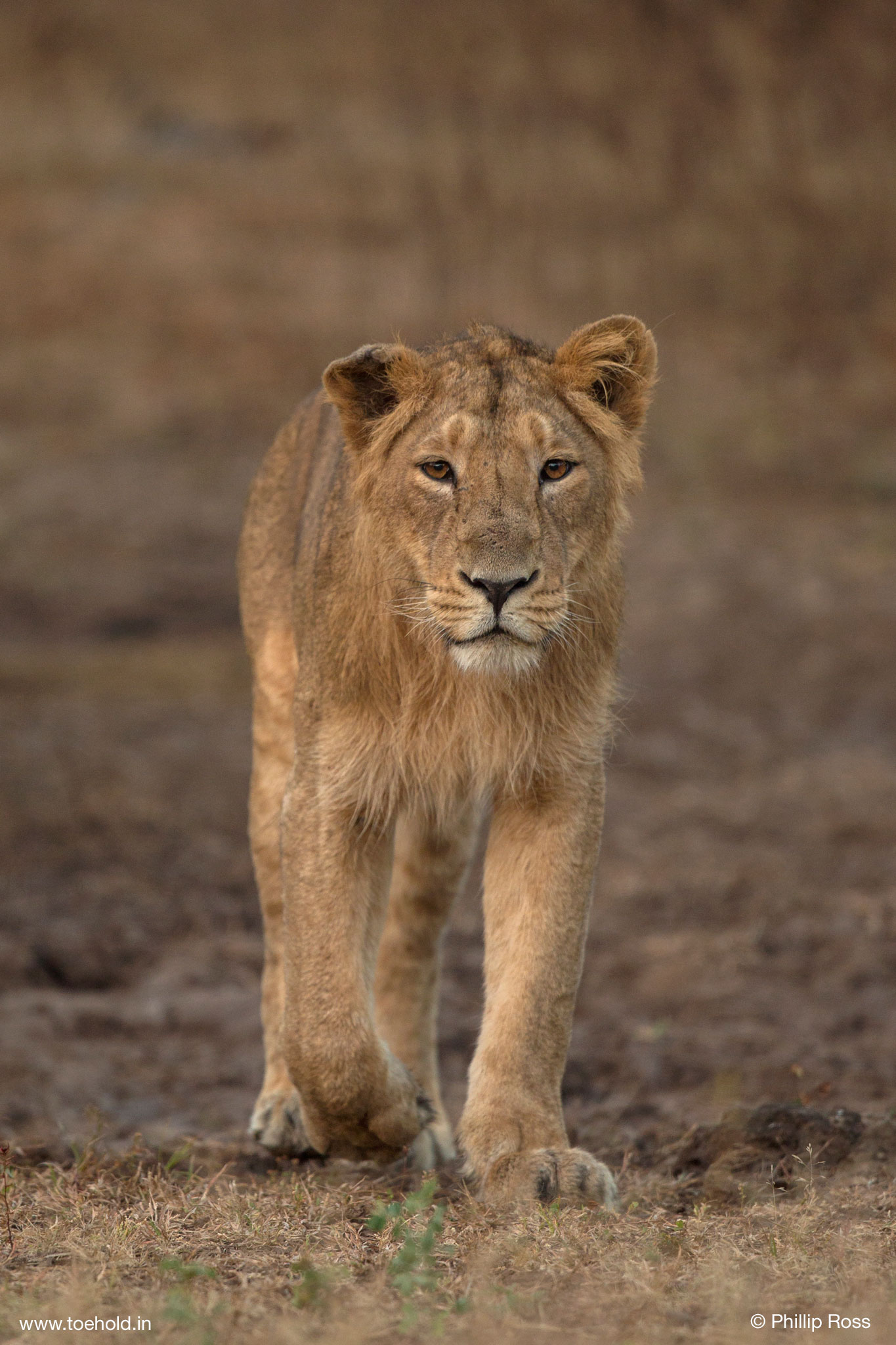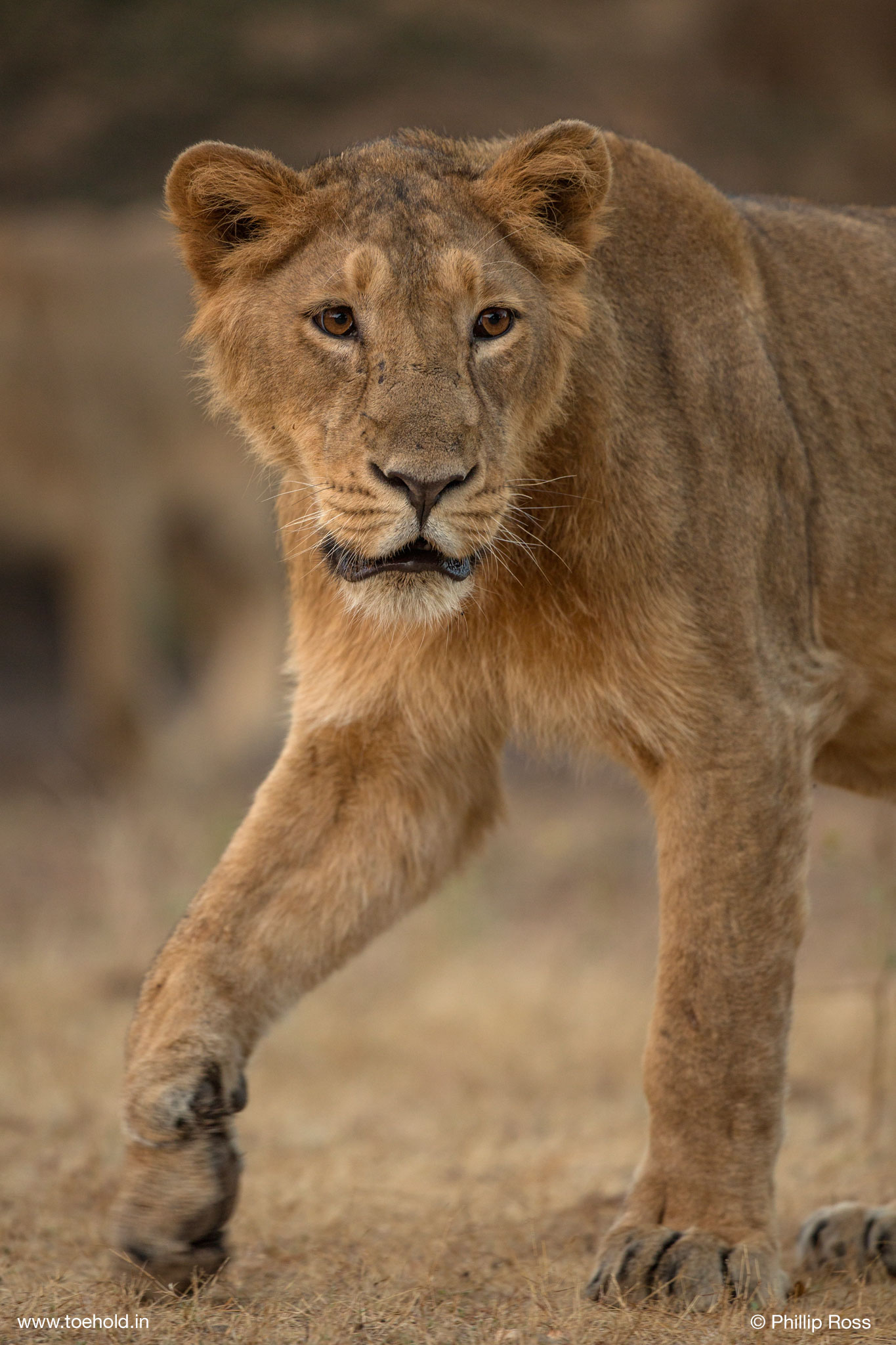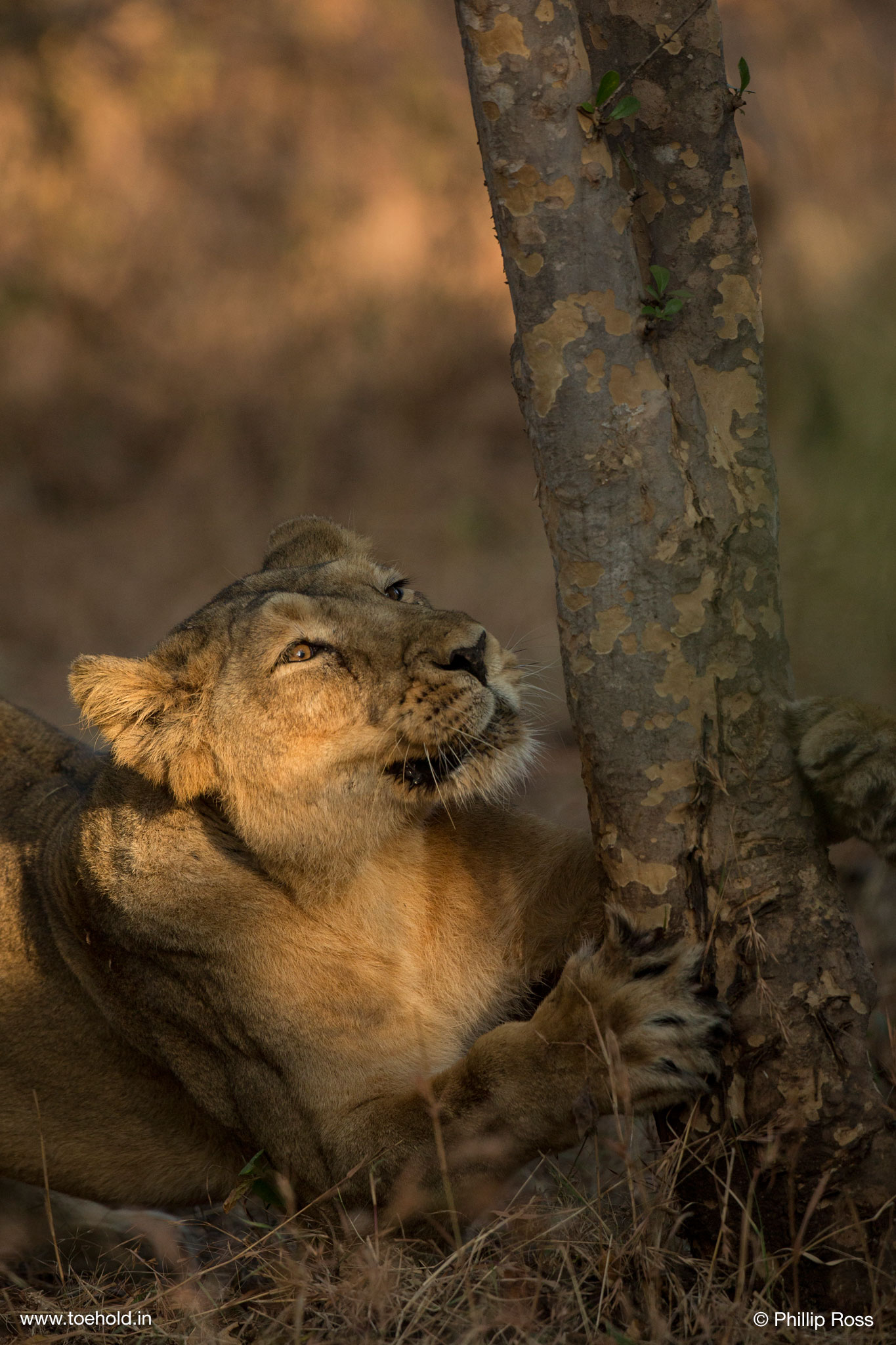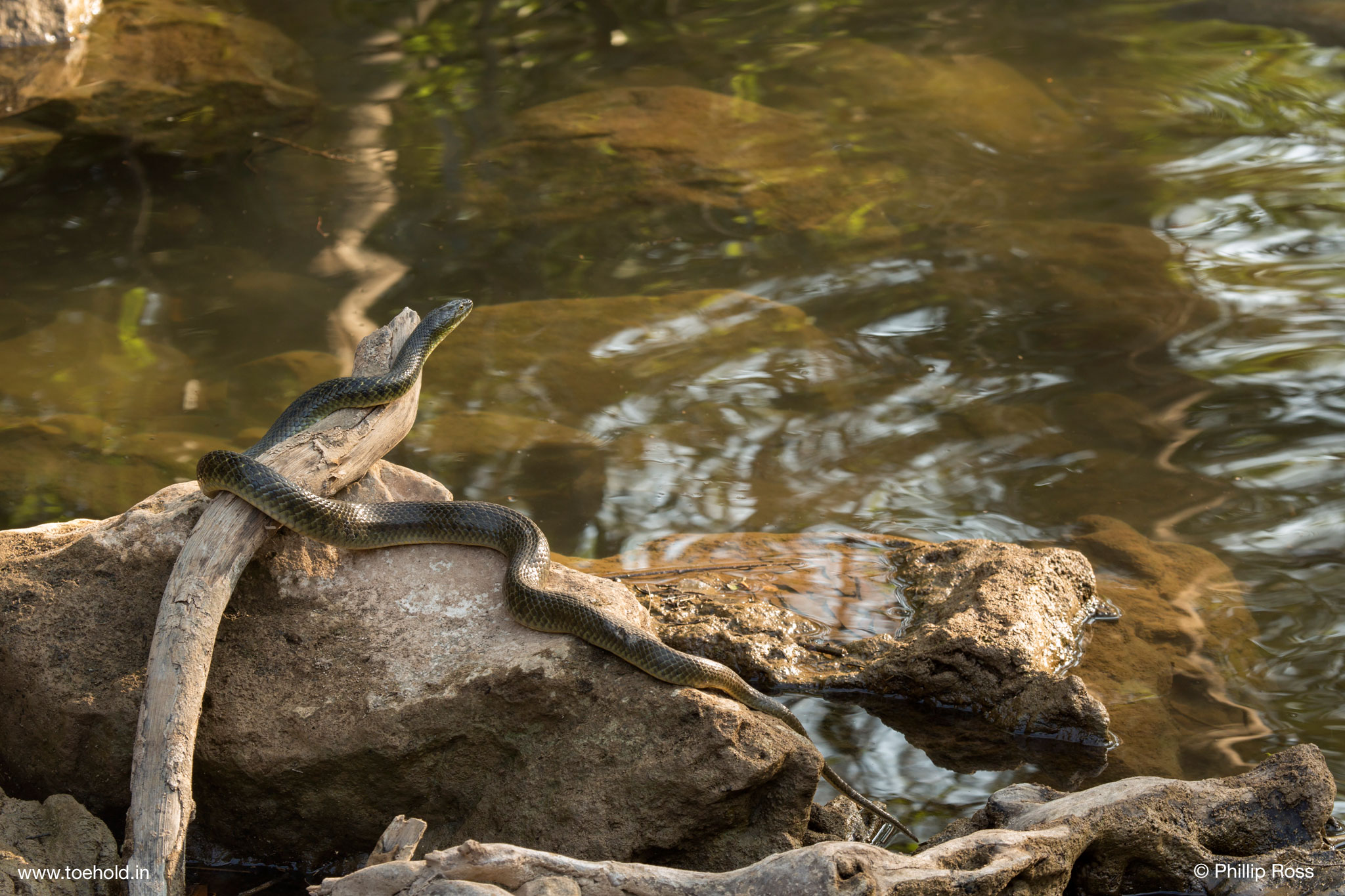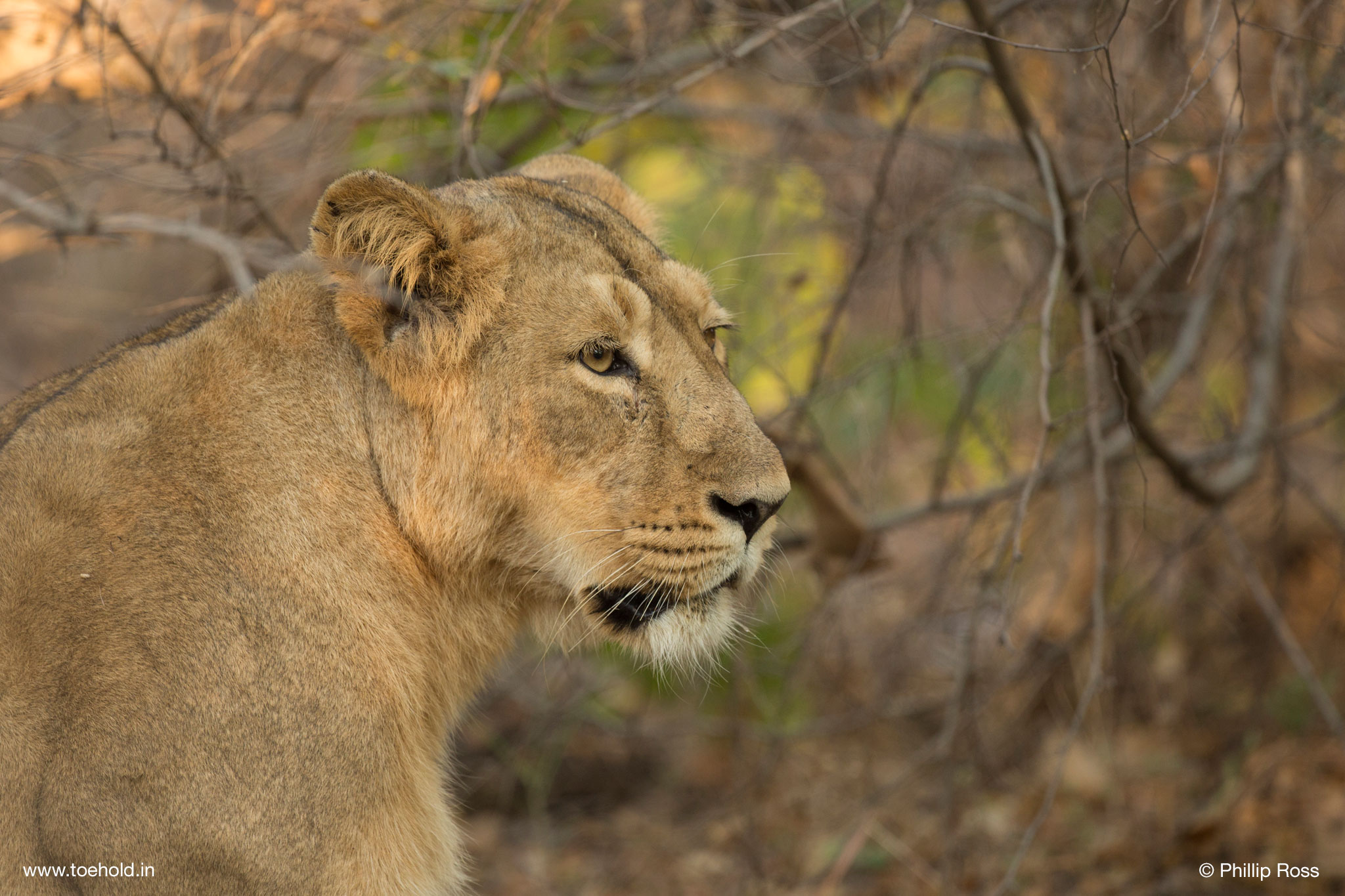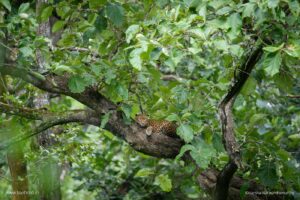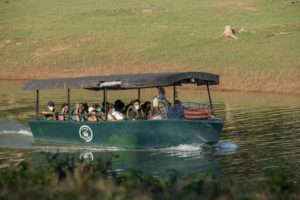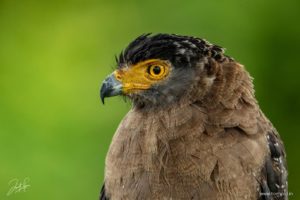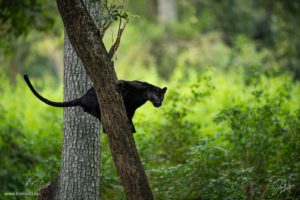A smooth and uneventful drive from Rajkot had got the group to Gir on 4 December. The weather wasn’t as cold as they had expected, which was a good thing. Even better, Skipper for the Tour and captain extraordinaire, Phillip Ross facilitated a mutual introduction session before the group hit the sack with roaring dreams of the exciting encounters that lurked ahead.
On that warm note the next morning, they headed into the park with much vigour in two different vehicles, and within the very first half hour, Phillip received information that a lioness and her cubs were close to an intersection, and decided to wait.
Within 20 minutes, a male lion along with an ensemble of two females and four cubs sat right in the open affording a photographic feast. After having their fill, participants went on to enjoy some terrific birding, sighting yellow-footed green pigeons in the open, along with a white-throated kingfisher and a changeable hawk eagle.
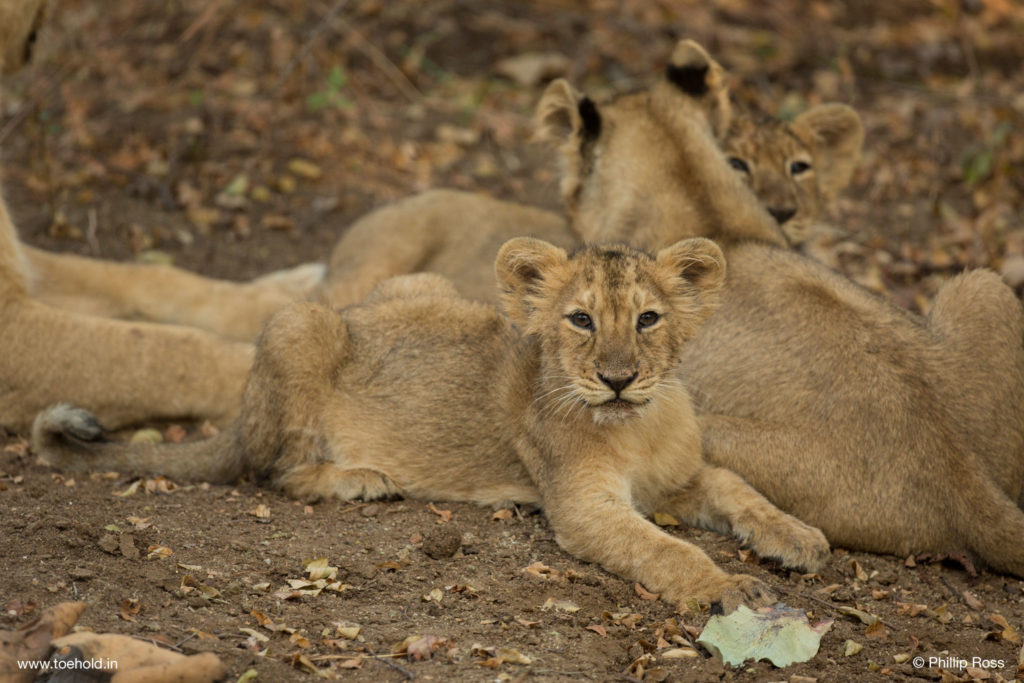
Their opening tryst with the land of the lion had been sensational.
That evening they returned to the area hoping for more action, and encountered a male sleeping by the side of the road, looking like a cub – with his paw up in the bushes appearing as though it was stuck therein!
The cherubic spirit continued as they went to a waterhole and found two lionesses snoozing like babies, for now safe and content, and innocent and spotless in their fragile world.
Undisturbed in their reverie, they awoke only later in the evening, before making some electrifying eye-contact. “It was a fabulous experience,” recalls Phillip.
Watching them with their reflection in the water, with a crimson sun setting on the glorious day surely must have been.
Next morning, even before first light, the party stumbled on something more sought after than a lion and more difficult to see than a leopard here. It is primitive, monogamous, a subject of folklore and classified as ‘near-threatened’ by the IUCN.
A striped hyena stood by the road.
After a touch of hesitation, it headed straight for the vehicle track and started trotting away before making a complete U-turn and trotting back towards the vehicles! Which only goes on to show that even monogamous mammals can be highly unpredictable and prone to dramatic changes in orientation!
Then the marauder disappeared into the undergrowth, leaving behind an enthralled group of photographers and a massive buzz amongst the locals as the first hyena sighting of the season!
The morning off to a ground-breaking start, Phillip was feeling lucky, so he led the group to the spot where the big male, the lioness and the cubs were seen the previous day. His feeling was right on, as they were greeted by the male in magnificent light without any sort of ado.
To make the already sweet all the sweeter, the lioness emerged to the open a while later with her cubs.
Then, she suckled them.
“The tenderness with which the fearsome predator tended to her little ones was a most heartening sight,” remarks Phillip.
For a good half an hour participants enjoyed the sight of this maternal warmth before it was time to leave.
In the evening the group encountered a spotted deer crossing a railway track.
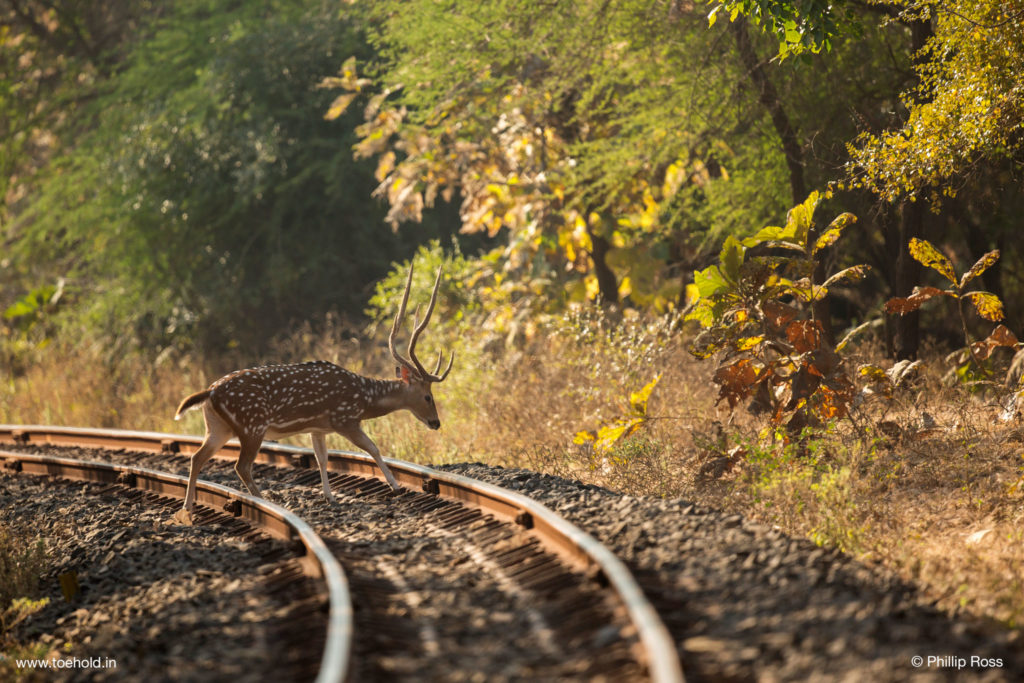
Transport infrastructure in protected wildlife areas poses a significant threat to wildlife, and documentary images can make for compelling storytelling and be of tremendous help in drawing attention to the dangers faced by animals living in human-dominated landscapes. That is just the sort of thing that lends additional purpose and meaning to the pastime of photography, making it profoundly gratifying.
A little later, Phillip asked for the vehicles to be parked at a spot near a cool stream and had the participants simply listen to the birds chirping and the alarm calls the wind carried from the distance.
Often in the pursuit of a specific animal, it is natural to miss enjoying the small joys of being in a forest. But Toehold Tours, led by photographers who are naturalists first at heart, are guided with the intent of enabling a holistic approach to the safari experience and are focussed as much on understanding and appreciation of nature as photography of it.
Moving on, they had just crossed one of the Maldhari settlements inside the park, when the guide in one of the vehicles spotted the nearly invisible – a young leopard sitting impossibly camouflaged in the grass on an incline.
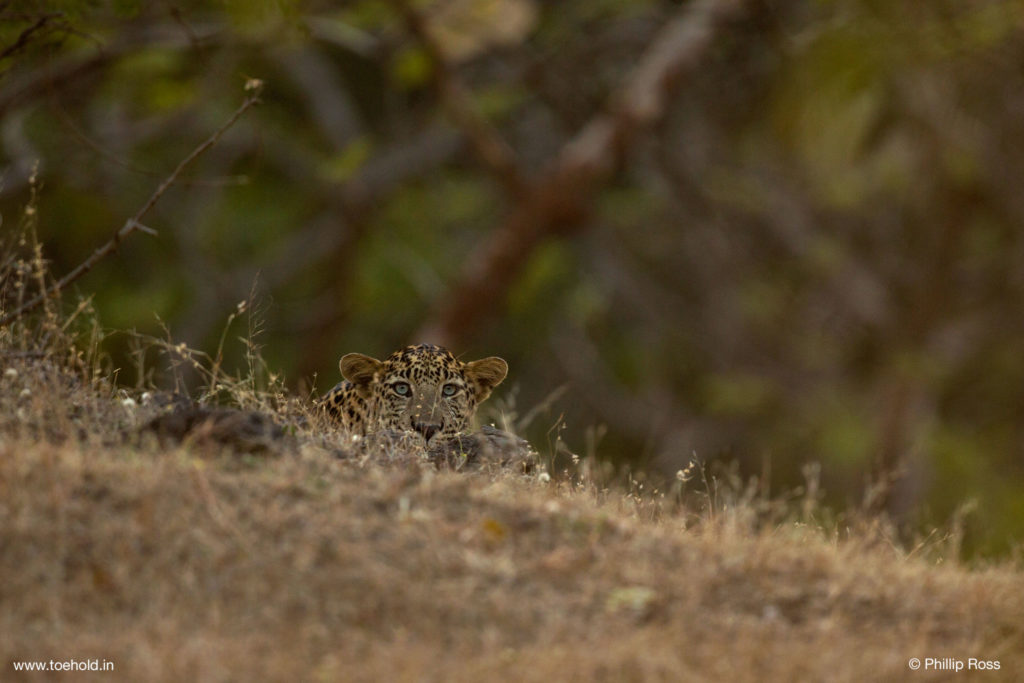
It took a while for Phillip to help everybody spot it before it made matters easier by getting up and granting a great view of itself. And before participants could barely digest this serendipity, more came their way in the way of a jackal basking in delightful golden light.
Later in the evening, just before exiting the park, Phillip decided to try the group’s luck with the lions that were previously sighted, and came across a pride of four brothers sitting magnificently in the open, posing for the camera in what was a perfect end to an eventful day.
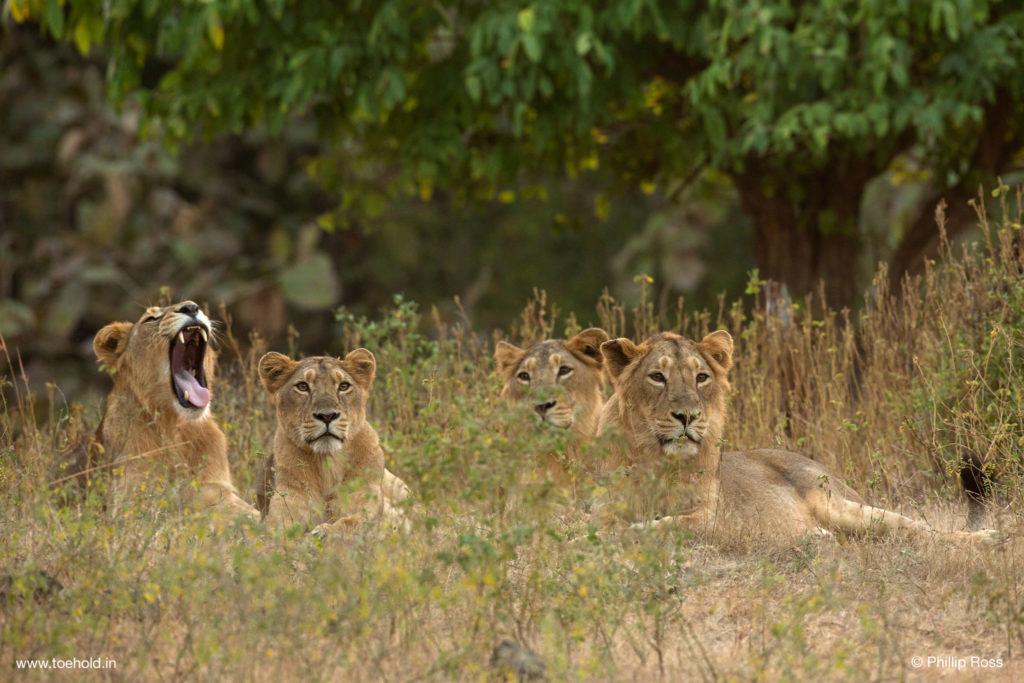
His hunch had paid off again, and as the sun set on Gir, the promise of another great day to follow had just risen.
Next morning, Phillip chose to return to where the lion brothers were, for more knee-weakening stints, and found them in the same place. The light hadn’t achieved the desired intensity yet, so they did what should be done when the conditions are not ideal – wait until they become ideal.
Soon, the brothers came up to the road to cross over, with one of them walking right past one of our vehicles in dramatically improved light.
Animals were being seen in pairs this day, as the group then came upon a pair of jackals. And just when they thought they had had their share of carnivora for the safari, they were blessed with the sight of another leopard. It stood by the side of the road watching on, and when the vehicle stopped, it slunk towards the thicket but paused just at the edge to give them a baleful look before disappearing quietly as cats customarily do.
It was the first leopard for two of the participants, and it gave them a fit of excitement, to put it mildly.
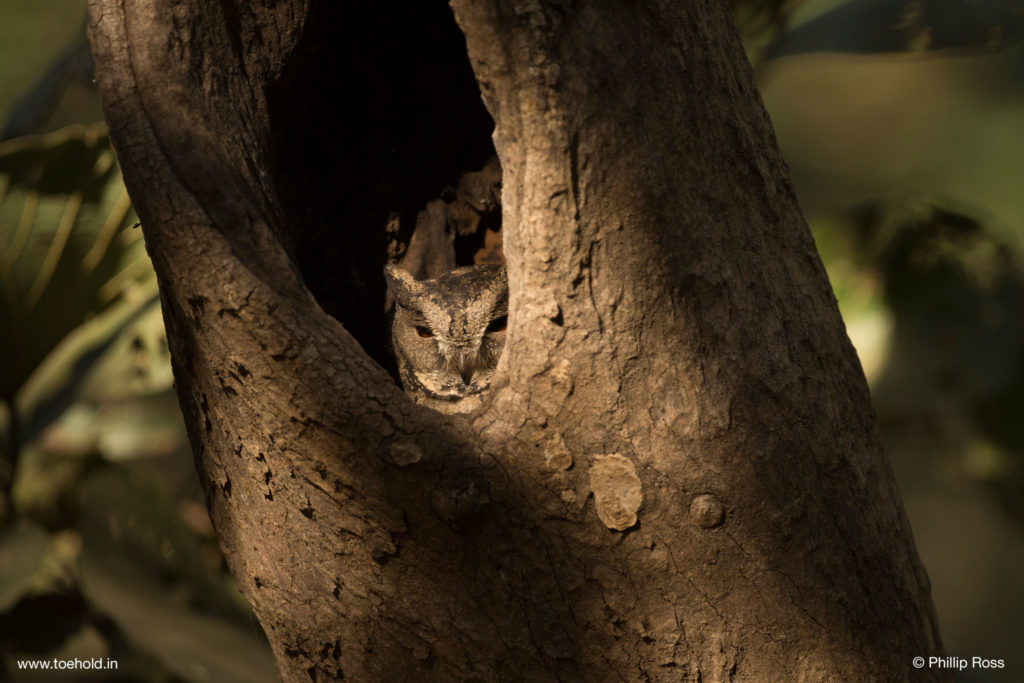
That evening, on the final safari of the Tour, Phillip decided to go towards the Kamleshwar Dam, a local landmark. En route were some collared scops owls posing at eye-level, as though they knew that photographers would bless them for it. And as the group finally approached the dam after being delayed by all these photographically enticing subjects, they saw a lot of cormorants fly across, some river terns, and an assortment of other forest birds. You might think it to be anticlimactic, but the participants – some of them bona fide nature and bird lovers – certainly didn’t.
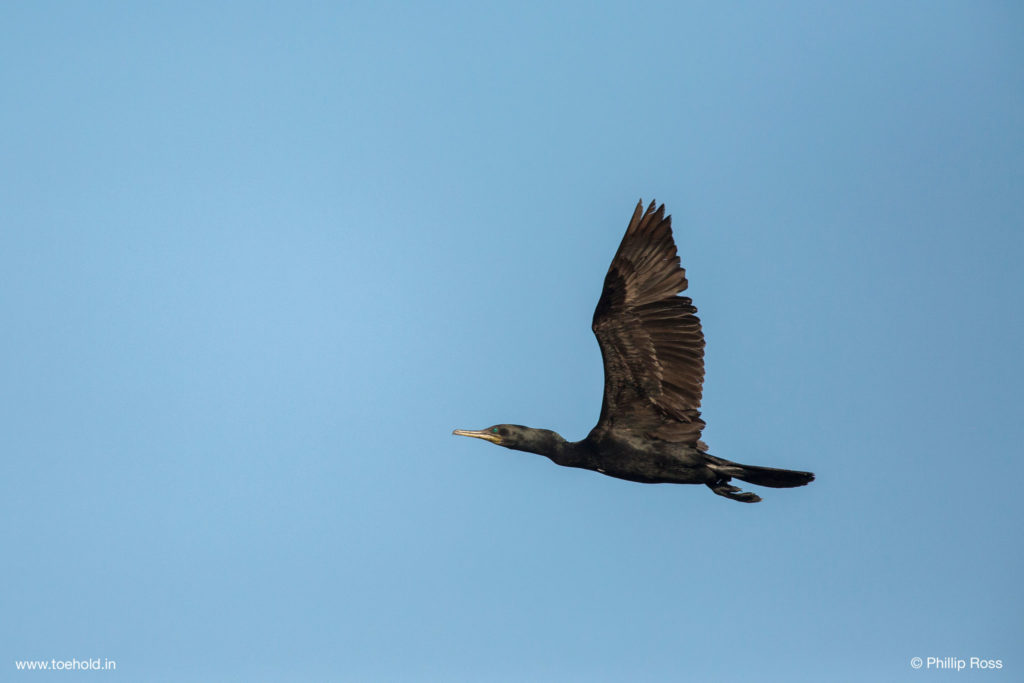
It seemed almost inevitable now that while returning, another pride of lions was encountered. These were lying lazily despite it being the peak hour, as though suggesting their admirers to get some well-deserved rest after all the action they had enjoyed.
The group complied.
Next morning, the group enjoyed a birdwatching trail. The birding guide was excellent at spotting and showed them some beauties, such as the pygmy woodpecker, black-hooded oriole, another scops owl and spotted owlets. The white-bellied minivet was heard but not seen.
But the group had seen plenty. The cats had conjured a roaring time for them and the wealth of other wildlife had supplemented them plentifully as the group walked back from Gir like the content kings of the Land of the Lion.

